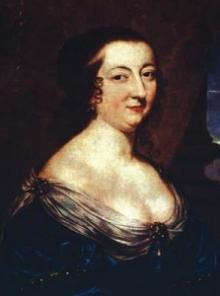What Makes a Fairy Tale a "Fairy Tale"?
 |
| Warwick Goble's Beauty & the Beast, courtesy of Wikimedia Commons |
Do you wonder what classifies a story as a fairy tale?
I've been wondering that lately, as I read a wider variety of Beauty and the Beast tales. Plus, how can I discern if a retelling is a true fairy tale or a fun rendition using the BATB premise of girl falls for beastly guy?
So I did a bit of light research (resources at the end), and here's what I found about the general make-up of a fairy tale:
- There's a moral lesson to be learned
- There's a heroine or hero
- There's an obstacle, task that needs to be accomplished or ordeal to be endured
- There's magic involved
- There are friends or other characters supporting the protagonist
- There's a happily ever after - the ordeal is overcome!
and...
- A fairy tale takes place close to home for the character
- A fairy tale takes place close to home for the (original) audience
- In a fairy tale, the protagonist is generally an audience surrogate, and the characters that he or she interacts with are archetypes
 |
From Beauty and the Beast: An Old Tale New-Told, with Pictures by Eleanor Vere Boyle, courtesy of Wikimedia Commons |
Fairy Tale Elements in Beauty and the Beast
- There's a moral lesson to be learned -- Madame Barbot de Villeneuve, the original author, sought to share a message with young ladies about looking beyond physical attributes in choosing / accepting a husband.
- There's a heroine or hero -- Beauty is the heroine of the tale. The Beast is an important character, but he represents more the task or obstacle that Beauty must overcome.
- There's an obstacle, task that needs to be accomplished or ordeal to overcome -- Beauty is set the task of seeing beyond Beast's looks to love him.
- There's magic involved -- Well, there's the curse that's central to the tale. There are also fairies and magic TV rooms and animal servants.
- There are friends or other characters supporting the protagonist -- In the original tale there's a whole host of supporting cast: a good fairy aunt, the evil fairy, the snooty, warrior queen mother and of course, the father who starts all the trouble.
- There's a happily ever after -- Of course there is! Beauty agrees to marry the Beast and we learn about all kinds of connections with the fairy godmother and the "good" choice Beauty has made after the Beast's reveal.
- A fairy tale takes place close to home for the character -- Yep, Beauty didn't have to go far to reach the Beast's palace.
- A fairy tale takes place close to home for the (original) audience -- Madame Barbot de Villeneuve was counseling young French ladies on choosing a husband, which is where the original story was penned.
- In a fairy tale, the protagonist is generally an audience surrogate, and the characters that he or she interacts with are archetypes -- Beauty represents the marriageable, young women of the time. The Beast represents the noble, sedate attributes to be on the lookout for when snagging a mate. The "Beloved Unknown" in her dreams is the handsome gent they'll be tempted to fall for, but shouldn't.
Pretty fascinating. I've mentioned before, I'm not a literary critic nor trained in literary basics, so I'll apply criteria lightly. But I will be on the lookout for those Beauty and the Beast retellings that hold up to the fairy tale genre, and I'll mark them on the Beauty and the Beast Fan Fiction list.
What I like about
being more knowledgeable about the criteria of a fairy tale, is that I better
appreciate the tales that at first seemed overly simple. Fairy tales are focused and purposeful. It also got me interested in reading
commentary on fairy tales, such as "On Fairie Stories" by Tolkien and "In Defense of the Fairy Tale" by C.S. Lewis.
I hope this helps you have a new appreciation for the fairy tale, as well.
Resources for Fairy Tale Background
- https://clearwaterpress.com/oneyearnovel/blog/what-makes-a-fairy-tale-a-fairy-tale/
- http://www.surfturk.com/mythology/fairytaleelements.html
- https://newrepublic.com/article/126582/irresistible-psychology-fairy-tales
- https://libguides.mssu.edu/c.php?g=185298&p=1223898
- http://expositions.bnf.fr/contes/enimages_us/salle4/page9.htm
- https://writing.stackexchange.com/questions/20778/what-defines-a-fairy-tale-versus-typical-fantasy/20779



Comments
Post a Comment